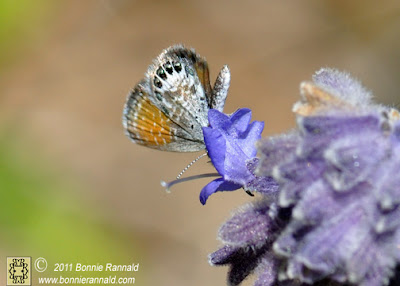Flowering Plants in a High Desert Yard
Trying to accent a yard in the Great Basin Desert with attractive wildlife friendly plants has been a learning experience of trial and error for me. The Great Basin is the largest desert in the U.S. and is considered a "Cold Desert" due to its northern location and higher elevations that average between 4,000 feet 1219.2 m to 6,500 feet 1828.8 m. The more southern area of the Great Basin where I am located averages less than 7 inches 17.78 cm of perception a year. Nestled between the Wassuk and Gillis mountain ranges, the winters can be cold with temperatures reaching below freezing and the summers can be harsh with the sun shining down through the clear blue sky.
Trying to grow the usual flowers and shrubs that adorn most yards just ends in disappointment when the plants struggle for survival and eventually die. However being a wildlife photographer, I wanted a yard that was attractive for the various birds and insects and would offer me a place to relax and enjoy the scenery.
Pygmy Blue Butterfly on Rosemary Blossom
The flowers and shrubs that thrive and bring so much color and various forms of wildlife to my yard are as follows:
One of the most unusual flowering shrubs is the Caesalpinia gilliesii or commonly known as Bird of Paradise Bush. A member of the legume family, the Bird of Paradise Bush is native to Argentina. It thrives in my area, especially with some extra water during the hot summer. The yellow flowers attract hummingbirds and butterflies.
Apricot Globe Mallow is an annual flowering plant native to the southwestern desert. Growing along washes, the orange flowers provide pollen and nectar for bees, hummingbirds and butterflies. It is also a staple in the diet of the Desert Bighorn Sheep.
The deep blue Salvia of the mint family thrives in full sun and will keep flowering with a little extra water during the dry spells. It is a favorite with the hummingbirds and butterflies, but repels deer and rabbits.
Gaillardia or blanket flower accents the planting beds with large daisy like blooms. A sun and heat loving plant, the blanket flower attracts hummingbirds, butterflies and small birds that eat the seeds.
Sunflowers are my favorite flowers and just happen to do so well here that I have to thin them out. They come up all over the yard from seeds blown by the wind or dropped by wildlife. The seeds are a food staple for birds and ground squirrels. Bees and butterflies are drawn to the flowers and I have even watched hummingbirds visit the flowers.
Desert Willows are native to the Mojave Desert. They reach a height of 25 feet, 7.6m and grow along washes at elevations between 1000-5000 feet, 305-1524 meters. I brought some small Desert Willow transplants from my yard in Las Vegas and they are thriving here! The hummingbirds, moths and butterflies are drawn to the nectar. What a wonderful tree that decorates the landscape while providing shade and shelter.
I have many other different varieties of plants in my yard including junipers, elms, various grasses and an almond tree. However, the plants that I've focused on in this post are the summer flowering kind. A few years ago, the yard was certified by the National Wildlife Federation as a wildlife friendly habitat. So I can just sit back, relax and enjoy the outdoors whenever I feel the urge.
For additional reading:
What
an exciting and interesting photo-adventure this day has been. I love
it when I am drawn to an area and not knowing what to expect I get
treated to new experiences.
Sign up and follow my blog to see where my next photo-adventure will be!
Photography places me in the moment where I can share that moment in time. It becomes a life story as represented by my interaction with the scene. The happiness and beauty or the sorrow and strife; how I focus leaves a lasting impression that might touch the viewer on a spiritual level.
"Reflecting Nature's Artistry"
No images on this blog are within Public Domain or are available for free download.
All rights reserved, world-wide and images protected by Digital
Millennium Copyright Act (DMCA). All photography, graphics, text,
design, and content is copyrighted by Bonnie Rannald and should not be
copied, down-loaded, transferred and re-created in any way without the
express consent, in writing to Bonnie Rannald.
For information on Bonnie Rannald licensed, right-managed images, please
submit a written request.
































